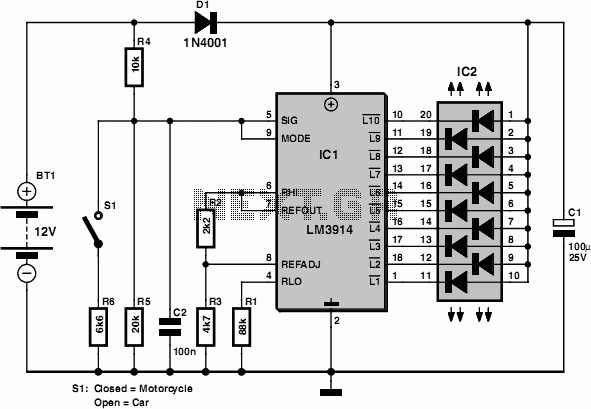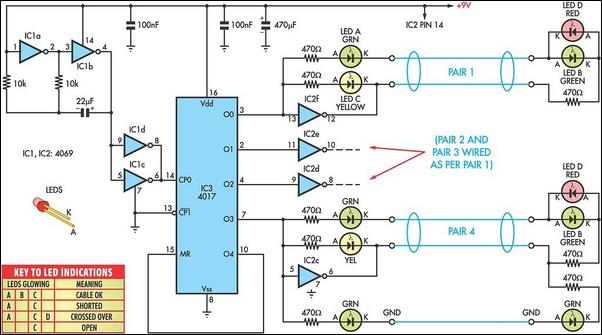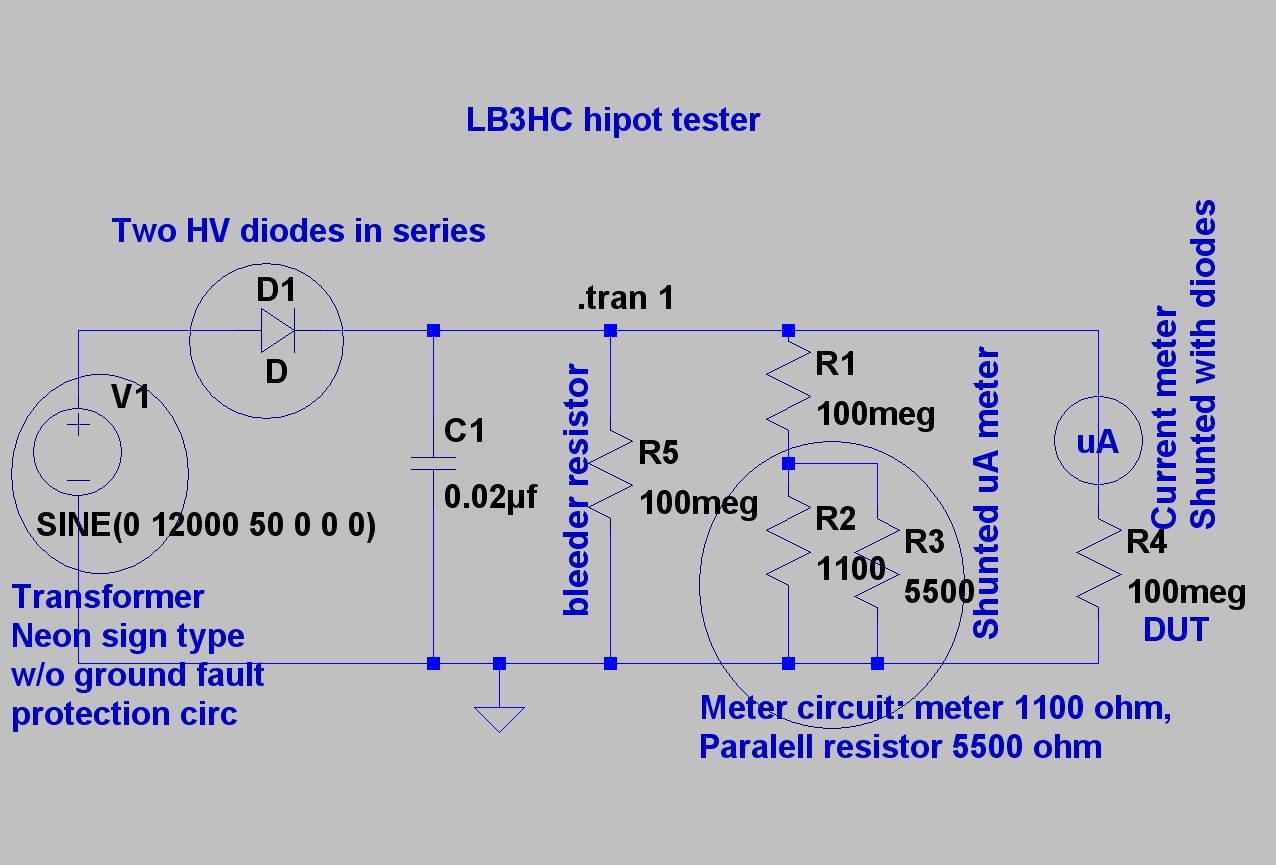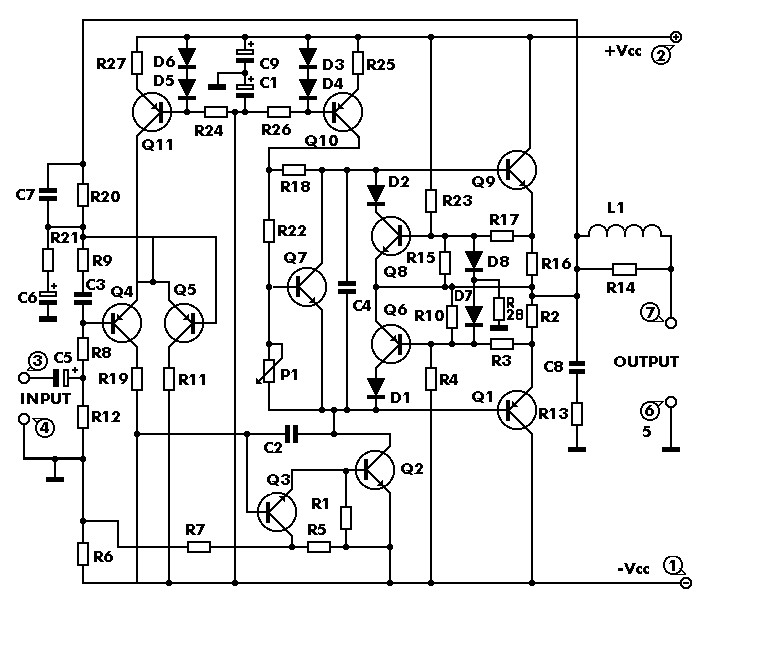
Continuity tester for pcb
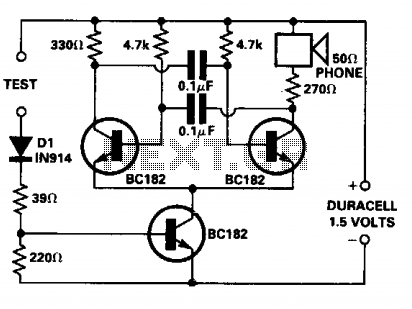
The continuity tester is designed for tracing wiring on printed circuit boards. It consumes significant power only when the test leads are shorted, eliminating the need for an On/Off switch. The voltage applied at the test terminals is not sufficient to activate diodes or other semiconductors. Resistors below 50 ohms are considered as short circuits, while those above 100 ohms are regarded as open circuits. The circuit features a simple multivibrator consisting of transistors T1 and T2, which are activated by transistor T3. The components connected to the base of T3 include D1, R1, R2, and the test resistance.
With a 1.5-volt power supply, the voltage is inadequate to turn on any semiconductor connected to the test terminals. A telephone earpiece can be used, although a 30-ohm speaker would also function effectively.
The continuity tester circuit employs a multivibrator configuration, which is advantageous for generating square wave outputs. This is achieved through the interaction of transistors T1 and T2, which toggle their states based on the input from T3. When the test leads are shorted, the circuit experiences a change in the input conditions, causing T3 to conduct and subsequently switch on T1 and T2, resulting in an audible or visual indication of continuity.
The components associated with T3 play a vital role in determining the sensitivity and operational threshold of the tester. D1 is utilized for biasing and ensuring that the input to T3 remains stable under varying conditions. Resistors R1 and R2 set the appropriate gain and enable the circuit to function effectively without drawing excessive power. The test resistance serves as the variable element, allowing the user to determine if the circuit under test is complete or if there is a fault.
In practical applications, the choice of a telephone earpiece or a 30-ohm speaker as an output device provides flexibility. The low supply voltage of 1.5 volts ensures that the tester remains safe for use on sensitive electronic components, preventing damage while still providing reliable continuity testing. The design's simplicity and efficiency make it an essential tool for electronics engineers and hobbyists working with printed circuit boards.The continuity tester is for tracing wiring on printed circuit boards. It only consumes any appreciable power when the test leads are shorted, so no On/Off switch is used or required. The applied voltage at the test terminals is insufficient to turn on diodes or other semiconductors. Resistors below 50 ohms act as short circuit; above 100 ohms as open circuit. The circuit is a simple multivibrator—Tl and T2, which are switched on by transistor T3. The components in the base of T3 are Dl, Rl, R2, and the test resistance. With a 1.5 volt supply, there is insufficient voltage to turn on a semiconductor connected to the test terminals. The phone is a telephone earpiece but a 30 ohm speaker would work equally as well. 🔗 External reference
With a 1.5-volt power supply, the voltage is inadequate to turn on any semiconductor connected to the test terminals. A telephone earpiece can be used, although a 30-ohm speaker would also function effectively.
The continuity tester circuit employs a multivibrator configuration, which is advantageous for generating square wave outputs. This is achieved through the interaction of transistors T1 and T2, which toggle their states based on the input from T3. When the test leads are shorted, the circuit experiences a change in the input conditions, causing T3 to conduct and subsequently switch on T1 and T2, resulting in an audible or visual indication of continuity.
The components associated with T3 play a vital role in determining the sensitivity and operational threshold of the tester. D1 is utilized for biasing and ensuring that the input to T3 remains stable under varying conditions. Resistors R1 and R2 set the appropriate gain and enable the circuit to function effectively without drawing excessive power. The test resistance serves as the variable element, allowing the user to determine if the circuit under test is complete or if there is a fault.
In practical applications, the choice of a telephone earpiece or a 30-ohm speaker as an output device provides flexibility. The low supply voltage of 1.5 volts ensures that the tester remains safe for use on sensitive electronic components, preventing damage while still providing reliable continuity testing. The design's simplicity and efficiency make it an essential tool for electronics engineers and hobbyists working with printed circuit boards.The continuity tester is for tracing wiring on printed circuit boards. It only consumes any appreciable power when the test leads are shorted, so no On/Off switch is used or required. The applied voltage at the test terminals is insufficient to turn on diodes or other semiconductors. Resistors below 50 ohms act as short circuit; above 100 ohms as open circuit. The circuit is a simple multivibrator—Tl and T2, which are switched on by transistor T3. The components in the base of T3 are Dl, Rl, R2, and the test resistance. With a 1.5 volt supply, there is insufficient voltage to turn on a semiconductor connected to the test terminals. The phone is a telephone earpiece but a 30 ohm speaker would work equally as well. 🔗 External reference
